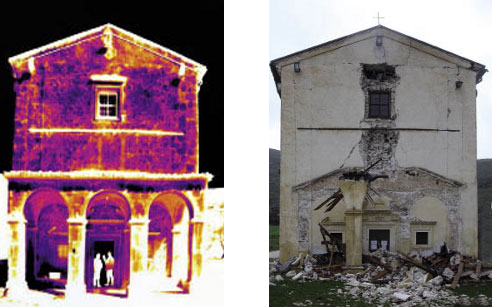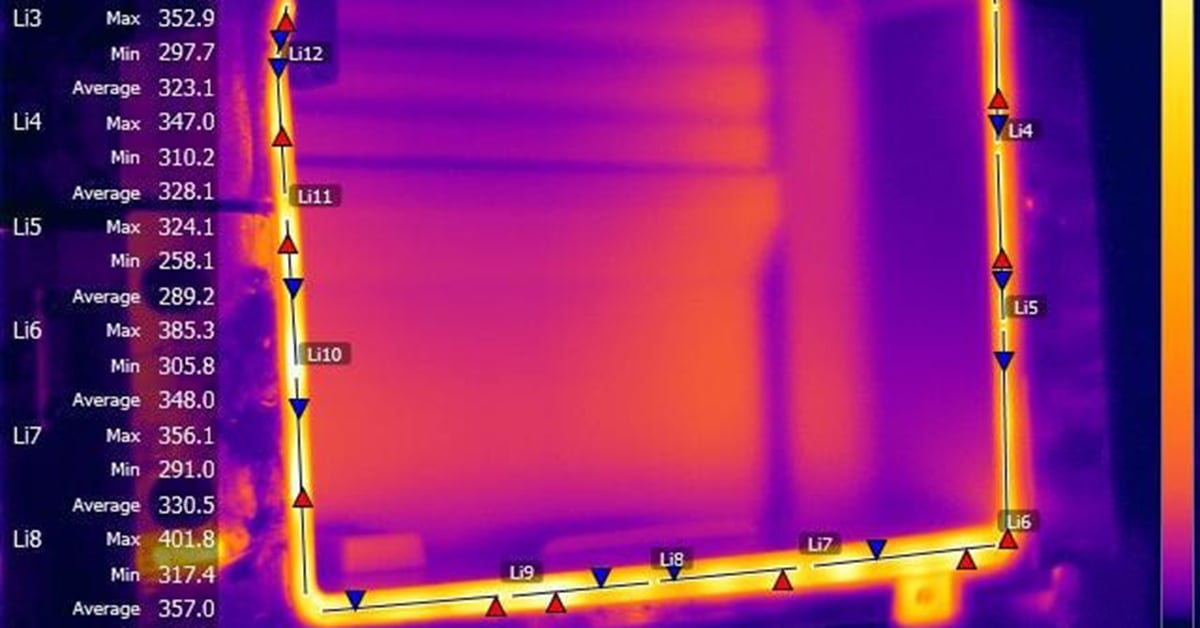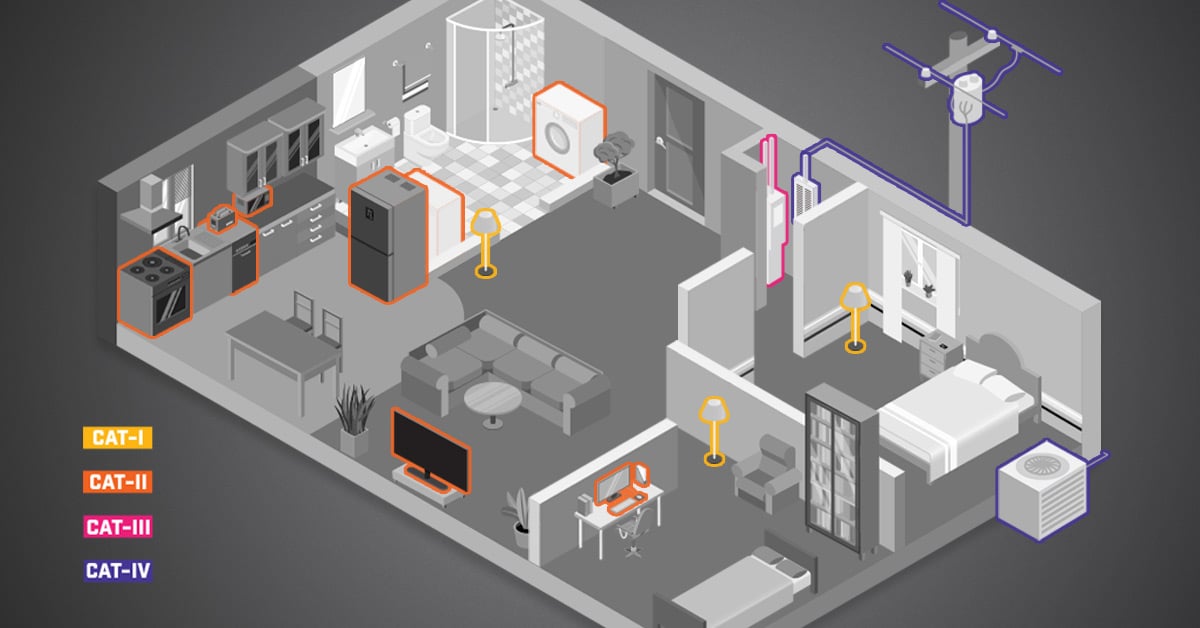Structural survey post-earthquake aided by IR Thermography applied to cultural heritage
The earthquake happened in Abruzzo (Italy) April the 6th, 2009 killed about 300 people. Furthermore, many works of art have been almost destroyed or are in a great danger of collapse. Monuments carrying centuries of history, Important buildings, like Churches, palaces or castles, in the city of Aquila or smaller villages nearby needs to be quickly restored, but first of all checked. Unfortunately, not only human beings, but even precious frescoes must be evaluated in order to be saved. The emergency needs fast, safe, reliable tools.
IR thermography has been found very valuable for this purpose, due to his optical nature. Fortunately, the CNR-ITC set up robust techniques for the non-destructive testing and evaluation, since a long time ago. For instance, the S. Lucia abbey has been monitored last April 26th to evaluate the structural conditions of the wall and the fresco itself (Giottos school XIV century). The picture clearly shows many structural cracks and the lack of adhesion. It is forth saying the new transient technique adopted required just 3 hours to monitor the whole buildings and the processing of hundreds of thermograms has been carried out using other 3 hours. After that, the day after the authority decided the best emergency intervention to save the monument. The result has been achieved so promptly even because of the use of effective thermal cameras by FLIR Systems.
It is important to stress that the key point of the success is the tight integration of knowledge between structural engineers and thermography experts, as recently published at Thermosense XXXI, SPIE, Defense Security and Sensing, Orlando (USA), 9-13 April 2009.

The same approach can be spoiled for the assessment of structural integrity of buildings, aided by IR Thermography. Starting from single images and sequences, combined both in time or space, according to dedicated algorithms, some parameters very useful to evaluate masonry can be extracted. The seismic risk of a building is much more cost effectively and extensively derived using such a data as input for the model than the traditional partially destructive tests.
It is quite impressive to notice the correlation between week points enhanced by thermography before the earthquake and the collapsed parts. The following picture give another example taken from the church of S. Stefano in Sessanio (AQ, Italy) last year and today.
The last example is the survey of the very large Collemaggio monastery (nowadays used as music school) carried out before and after the earthquake, in a single day.
Such results indicate a new field of application of IR thermography as a valuable contribution in case of earthquake. This approach could be effectively applied to several other buildings in danger.


